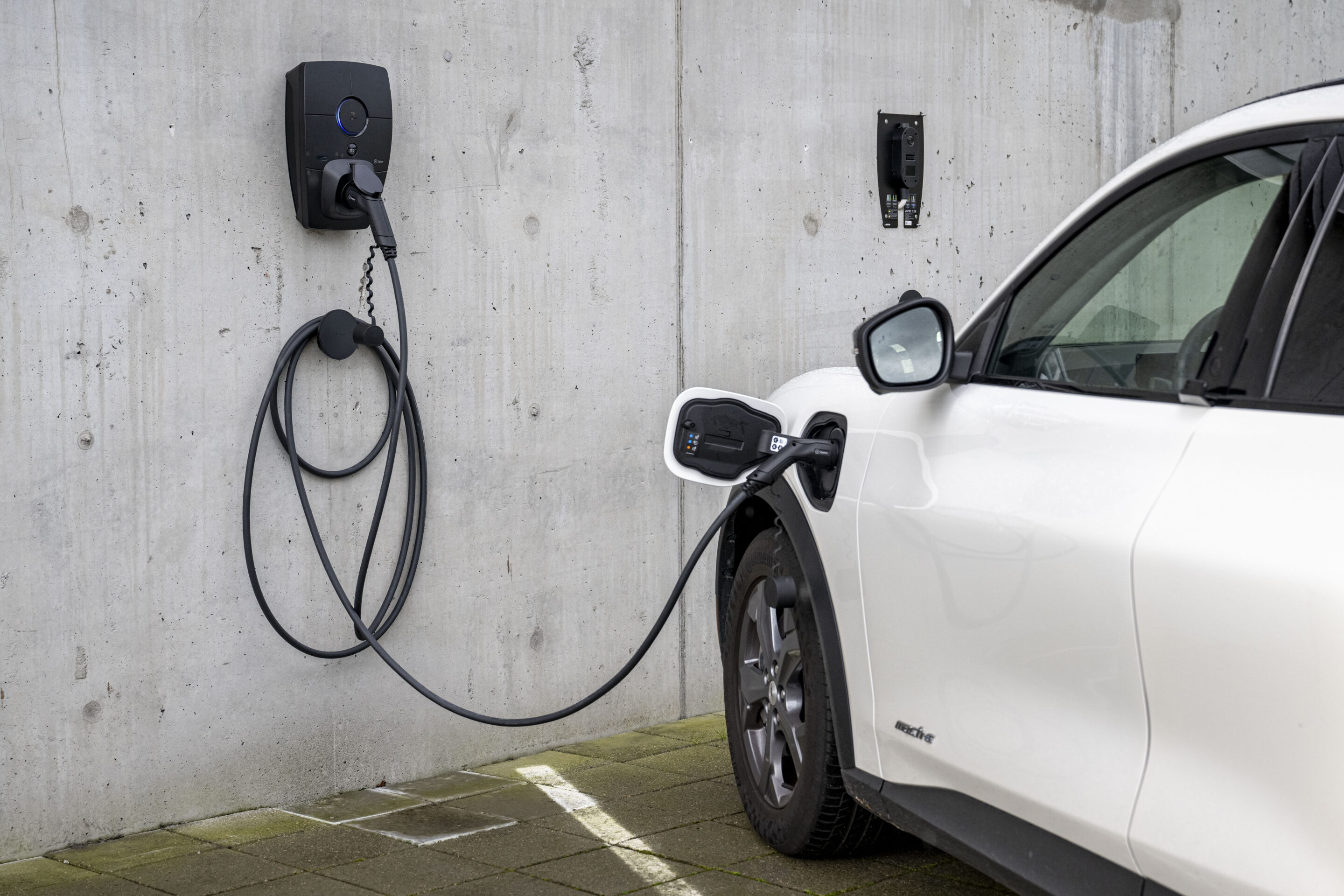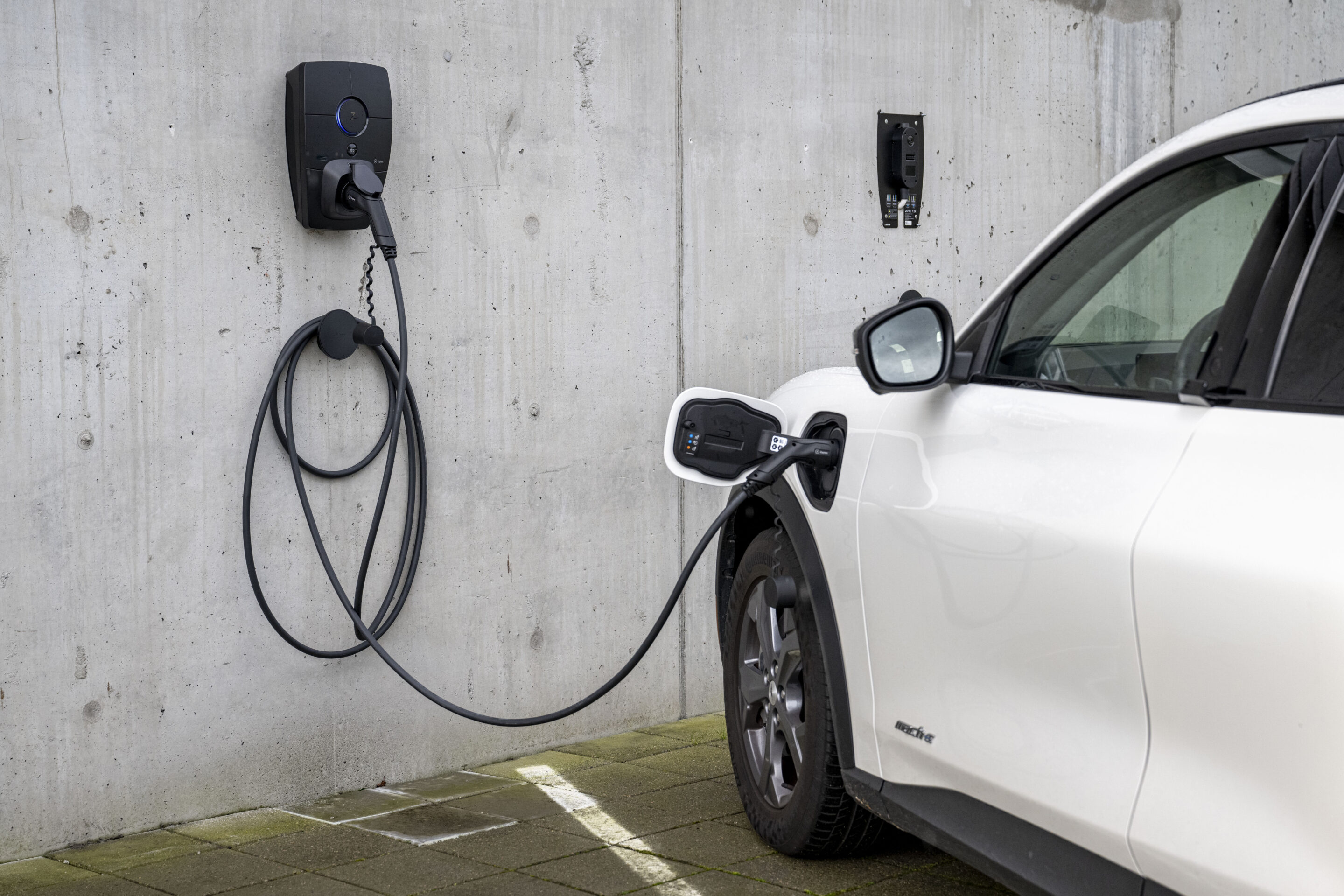If you’re thinking about becoming an electric vehicle owner, or taken that step already, you’ll understand that there are a lot of decisions to make, from buying the right make and model of car, understanding what range your EV has and picking the right charger.
While the network of public EV chargers is growing rapidly, with a 40% increase in the total of charging points in the UK between June 2022 and June 2023, it’s still wise to install a home charger for peace of mind so that you can always charge your car at home. Looking at the different options for home chargers can be a minefield, this guide explains the difference between tethered and untethered EV chargers, so that you can make a more informed decision about what is right for you.
What’s the difference between a tethered and untethered EV Charger
While both tethered and untethered EV chargers charge your car in the same way, tethered chargers have a fixed cable attached to the charging unit, while untethered chargers have a detachable charging cable that can be unplugged from your charging unit.
Tethered EV Chargers
Tethered EV chargers are designed with a fixed cable and while they come with plenty of benefits there are also some potential drawbacks of choosing a tethered EV charger.
Benefits of Tethered EV Chargers
- Time saving: If you need to quickly plug your car in, the tethered charger is there ready and waiting. You won’t have to untangle the spare one out of your boot that comes with your car to plug it in on both ends.
- Weather: Ifit’s a rainy day and you’re leaving the house and want to take your charging cable with you, having to fold up your wet, dirty cable and put it in your lovely car can leave you messy and also the car messy, having a fixed outdoor charging cable means it lives outside permanently.
Disadvantages of Tethered EV Chargers
- Fixed Length: Tethered chargers have a fixed length usually of about 5m. This means you might not be able to charge your car if you park in a spot where your cable cannot reach it.
- Higher cost: Generally tethered chargers are more expensive than their untethered counterparts due to the additional cost of the cable and connectors.
- Longevity: If your tethered charger breaks or becomes weak from constant use like any household charger such as an iPhone cable, it’s going to be expensive to replace as it’s integrated into the charger itself, rather than just replacing the charging cable.
- Cable storage: Most chargers with the cable attached will need some device to hang, loop and store your cable when not in use, this can look untidy on the side of your home and be a trip hazard if you don’t have time to wrap it up properly out of walkways.
Untethered EV Chargers
Untethered EV Chargers are designed to be portable and are used with a detachable cable. There are plenty of benefits to using an untethered EV charger, but they do also have their disadvantages.
Benefits of Untethered EV Chargers
- Flexibility on charge length: Charging cables come in a variety of different lengths, meaning you can use one that suits where you want to park, even if you have a very long driveway far from the unit itself.
- Lower cost: All EVs come with their own charge cable. Untethered chargers tend to be less expensive than tethered chargers, making them a more affordable option where you can use your new cable that you have purchased with your lovely new car.
- Easy to maintain: If the charging cable or connector on an untethered charger is damaged or broken, it can be easily replaced without having to replace the entire charging unit.
- Lock functions: Some chargers on the market have a ‘cable lock’ feature so you can easily lock your cable in to work just the same as a tethered unit.
- Neat and Tidy: Chargers take up enough space on the side of your house without having to worry about the cable too, having that element removed means your charger will always look neat and tidy.
Disadvantages of Untethered EV Chargers
- Longer set-up time: One of the main disadvantages of the untethered charger is it takes longer to connect both ends to start charging. One end to the charger and one end to your EV.
- Safety concerns: Although safetyconcerns can be mitigated by using high-quality cables and charging unit, low-quality cables and charging units if misused can be susceptible to safety hazards which can be dangerous.
How can Zaptec help?
Zaptec Go has a cable lock feature which means the choice is yours! You can use the cable your car was supplied with or purchase a Zaptec cable to lock in and keep at home not leaving you in trouble should you need AC charging when out on your adventure.
Ultimately choosing between a tethered or untethered EV charger is up to your own personal needs, but if you’ve decided that you would like the best of both worlds, why not choose the Zaptec Go? Not only is the Zaptac Go certified to the highest safety standards on the market but it is designed to be simple to use, easy to install and with built-in future-proof technology.


